15 Apr

As marketing trends emerge, every aspect of marketing evolves and develops as well. It’s evident in content and SEO writing. It’s also because of Google’s continuous updates to ensure that relevant content remains at the top. As such, some experts also see trends in writing strategies as well.
Writers need to adjust to new changes because it’s how they can utilize strategies for writing for businesses or their blogs. To do this, writers need to know the latest in writing in 2020. In this article, we discuss 10 writing strategies that you should utilize for your blogs and businesses.
Create Attention-Grabbing Headlines

You should always keep in mind that to capture your audience from the get-go is to lure them in with an attention-grabbing headline. It’s one of the most recommended writing strategies to use in 2020. Surveys show that 80% do read the headline, but only 20% would stop and make an effort to read the article.
Tip: Take note of how journalists create headlines.
Content Harmony argues that journalists can become amazing content writers because they have expertise in creating explosive headlines. Plus, they verify their work through research and include all facts thanks to the inverted triangle.
Another tip to consider: Use a headline analyzer.
Writers know the challenges in creating a good title. For some writers, it takes them some time to craft a good headline. In doing that, you’ll need a tool.
One is the CoSchedule Headline Analyzer and the other is the EMV headline analyzer. Both tools have their benefits in providing you feedback in creating eye-catching headlines.
Check out an example from Hubspot. The title is in a question form, and it intrigues a potential reader. You’re probably asking yourself, what is it about the exclamation is the author talking about. So, you click on the link and learn more if you need to use an exclamation point on certain copies.
Ease up on the Vocabulary
Solvid suggests using simple words when writing. It’s great you have a huge vocabulary bank, but it’s best to save the big words for novels or fiction. You can use big words for other things. But for content marketing’s sake, you’d want to connect with your audience. You’d want to seem approachable as well.
If perhaps you’re writing something technical, then that’s when you use the actual word. After this, you explain in layman’s terms. That way, your audience won’t make the effort to search the word and leave your blog.
Bloggers from the Content Marketing Institute and Social Media Examiner make sure their blogs are easy to read. If there are any terminologies that need an explanation, they would do so.
Add Questions
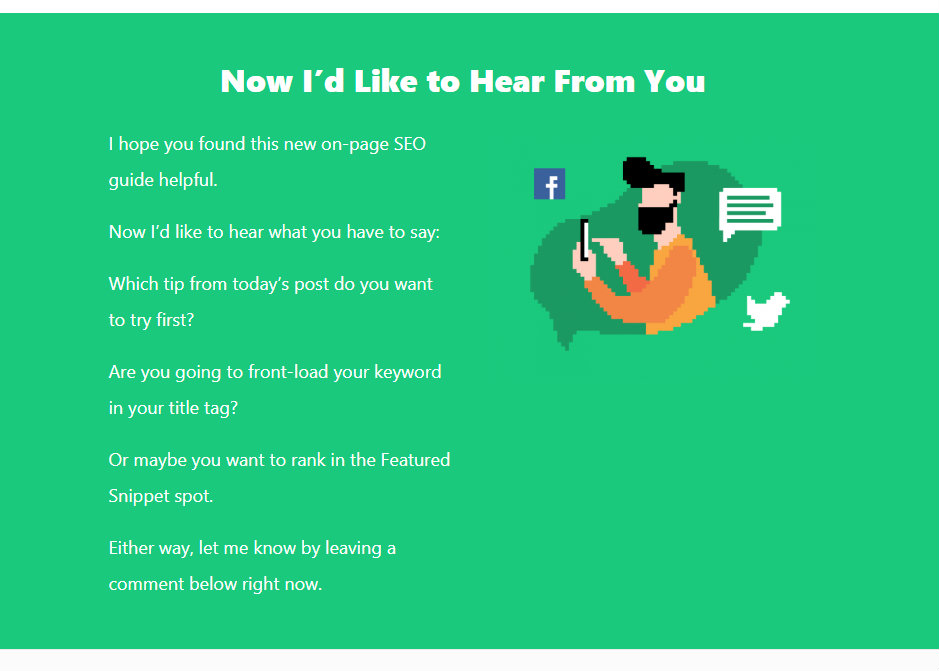
For further engagement with your audience, don’t forget to add questions on your blog posts, which Solvid also found as a trend.
If your blog has a comment section, adding questions may encourage your audience to answer them. The best place to display your question is at the end so they can give their response. Some bloggers have done that strategy, but it’s time the question gets more recognition.
Take a look at Brian Dean’s (Backlinko) blog post on On-Page SEO. As you can see, he ends his blog post with a question. This prompts people to reply to his blog post. In turn, he even responds to their answers too.
Write Snippets

Many SEO experts predict that in 2020, more bloggers will focus on snippets. For a quick recap on what snippets are, Yoast says it’s the inclusive single search result (i.e. URL, meta description, and page title) that comes up when someone searches for something.
For you to capture your audience’s attention, you’ll need to consider your snippet as you write. Firstly, you’ll need a good page title. That could be your headline, so refer to the top of this article on how you can create a headline.
You’ll then need to turn your attention to the URL. Make sure that all your blog posts have a custom URL that includes your keywords. That way, you optimize your snippet.
Finally, you’ll need to craft a meta description. On your meta description, make sure that you integrate your keywords and you keep it at 160 characters at the maximum.
Take a look at how Den of Geek optimized their snippet. As you can see, they have an attention-grabbing headline, then a custom URL, and a meta description that completes the snippet.
Use Bullet Points
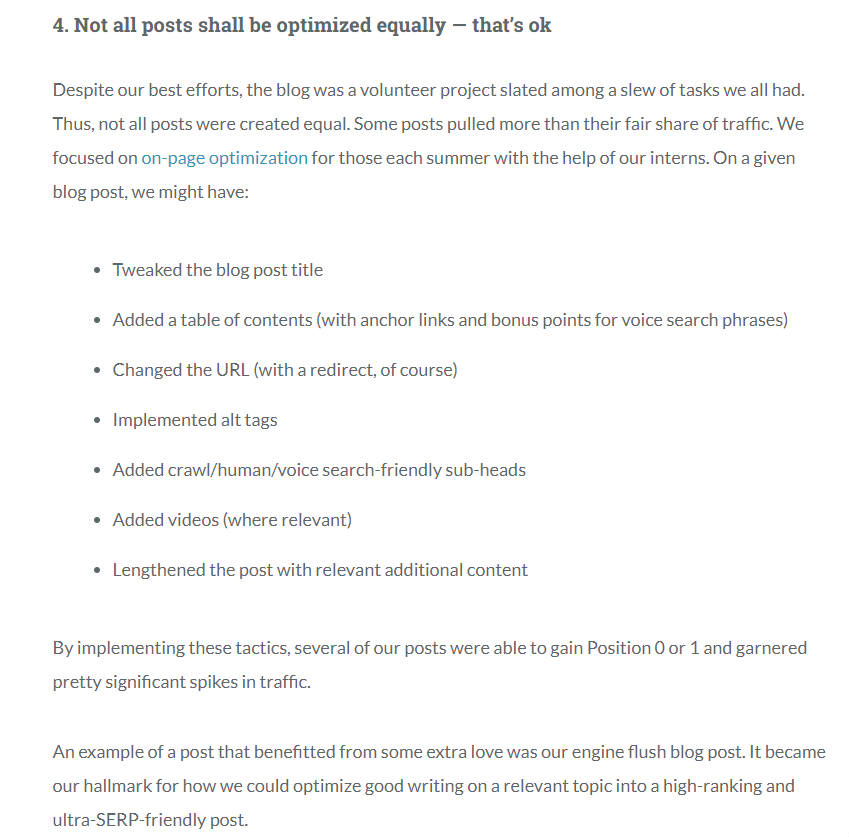
Search Engine Journal wrote that part of a brand’s SEO efforts is to create SEO-worthy pieces. In doing that, blog post optimization is key. To optimize a blog post, you need to take into account structure and formatting. That’s why they included bullet points as a writing strategy to remember.
For readability purposes, using bullet points can make it easy for readers to see your ideas clearer. Plus, it also helps with the structure of the whole blog post. You wouldn’t want it to be just paragraphs of text. You’d want some variety in what your blog should look like.
Check out how Moz used bullet points. Instead of listing how they optimized a blog post as a paragraph, they used bullet points to make everything clearer and easier to read.
Utilize Bolding and Italics
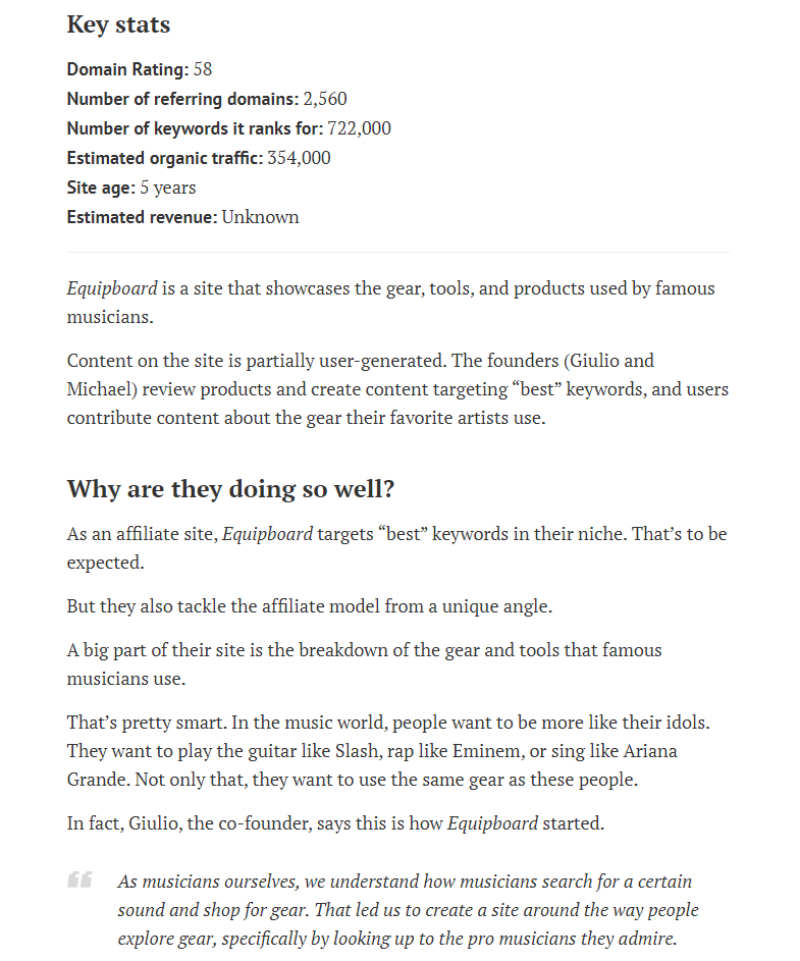
Search Engine Journal also recommends using bolding and italics for emphasis. Like in the previous point, it adds to better readability. Don’t limit your blog posts to plain text. You’d want to use bolds and italics to emphasize important points.
Say when your reader’s a skimmer, once they see a bolded or an italicized text, they could stop and see what you emphasized. Bolded or italicized texts aren’t limited to emphasis. It can be used to distinguish quotes and company names like how Ahrefs did on their blog post on affiliate websites.
Set the Tone
Many writing experts suggest that writers should always write for their audience. The tone is also valuable in creating good content. Say, you’re writing a piece about how to start a company. Your tone should be professional and friendly.
Tone can also help you connect with your audience better and in turn, connect with your business. It’s good to keep a consistent tone too, that way you’re keeping the brand consistent as well.
Moz and Ahrefs are great examples of blogs that keep their tone consistent. Their tone leans towards informative.
Consider Search Intent
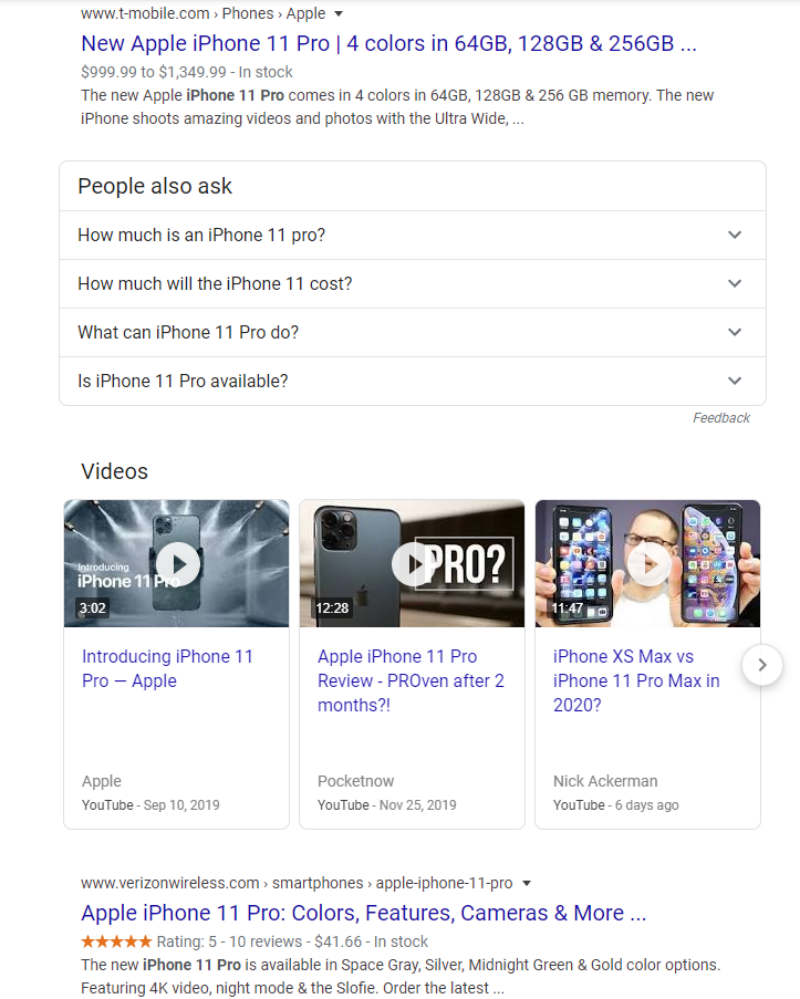
Search intent has bearing on Google search ranking. Search intent is how people search for something on people’s browsers. For example, they might say, “iPhone 11 Pro.” From there, most SEO writers would jump on the chance and use that when their target audience would search via voice or through typing.
When you search “iPhone 11 Pro,” you’ll notice that the first organic search comes from Apple. As you can see below, the following results come from T-Mobile and Verizon Wireless when someone searches for “iPhone 11 Pro.”
Be Direct
Wordstream says that one of the writing strategies for 2020 is to be direct. Don’t dilly-dally with your keywords anymore. You should already include your keywords in the introduction. Yoast says that if you already have your keyword in the introduction, you’re letting Google know what the article is about when it indexes your blog post.
Check out how Buffer wrote their introduction for social commerce. As you can see, they already mention their keywords, social commerce twice in the introduction. The introduction is straight to the point and doesn’t beat around the bush.
Include Facts or Data
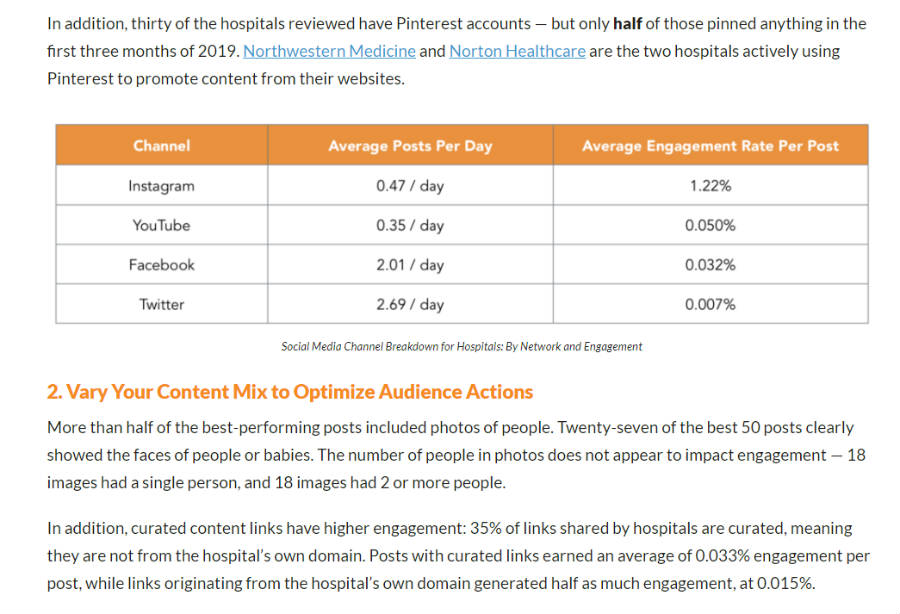
Sometimes we write content so we could stay relevant on Google search results. Though we write blog posts about a certain product or service, sometimes we forget to add some important details that would boost viewership.
To do that, you need to remember E-A-T when you write a blog post. According to Moz, the acronym stands for expertise, authority, and trustworthiness. It’s an algorithm update from Google that will give priority ranking to pages or blog posts that meet the E-A-T criteria.
When you add facts or data to your article, you amp up its relevance. More people can deem it valuable and they can share your article on social media and with others.
Many known websites like Neil Patel, Hubspot, Wordstream, Buffer, and others have used data or facts to support their blog posts. That’s why they’re always ranking in the first page of Google.
As a blogger, you should remember to post facts or data that will give your blog post more value and relevance.
As an example, you can check out Lauren Teague’s post about Healthcare Marketing in Convince and Convert. The blog post has data to back-up their ideas or key points. The post also contains a lot of data too, which would become beneficial for Convince and Convert.
Key Takeaways
Marketing evolves, so does writing. If it doesn’t, we’ll all be stuck doing the same writing strategies over and over, which could be boring. In turn, writers and marketers have to follow the trends to ensure that their content is relevant to Google. In applying these strategies, you can produce more relevant and high-quality posts, which will gain you more brand mileage.










